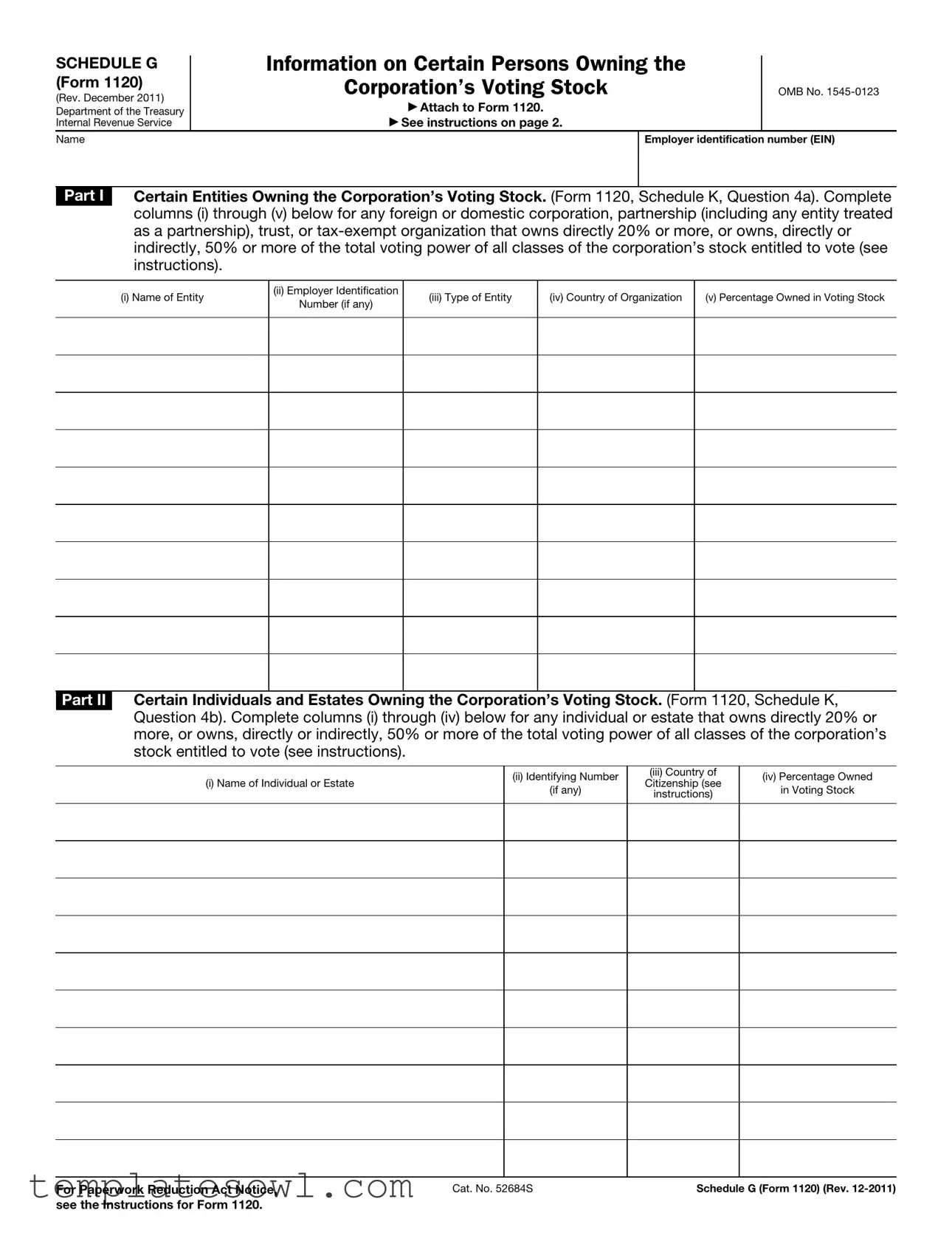What is Schedule G on Form 1120?
Schedule G is a form used by corporations to provide information about certain entities and individuals that own a significant portion of the corporation’s voting stock. It is part of the Form 1120, which is the U.S. Corporation Income Tax Return. Specifically, it captures details about those who own 20% or more, or directly or indirectly 50% or more, of the total voting power of the corporation.
Who needs to file Schedule G?
Every corporation that answers “Yes” to specific questions on Form 1120, Schedule K (Questions 4a or 4b), must file Schedule G. This requirement applies if certain entities, individuals, or estates own the voting stock in the corporation as described.
What information is required in Part I of Schedule G?
Part I focuses on entities such as corporations, partnerships, trusts, and tax-exempt organizations. Corporations must list each entity that owns at least 20% of their voting stock directly or at least 50% indirectly. The required information includes the entity’s name, the Employer Identification Number (EIN), type of entity, country of organization, and the percentage of voting stock owned.
What information is required in Part II of Schedule G?
Part II is dedicated to individuals and estates. Corporations must specify individuals or estates that own 20% or more of the voting stock directly or 50% or more indirectly. Essential details include the individual’s name or estate name, their taxpayer identification number, the country of citizenship, and the percentage of voting stock owned.
What are “constructive ownership” rules?
Constructive ownership rules refer to how ownership can be attributed through various familial or business structures. For example, if a person owns stock indirectly through a family member or entity, that stock may still count as ownership under these rules. The specifics are outlined in section 267(c), with certain exceptions depending on relationship and ownership structure.
What if a corporation is part of an affiliated group?
When filing, if a corporation is part of an affiliated group and is using a consolidated tax return, it should only list the parent corporation in Part I instead of including its subsidiary members. This focuses the reporting on the controlling entity rather than the smaller parts of the group.
Can an individual’s family ownership affect how they report their interests?
Yes, an individual’s family relationships can affect how ownership is reported. Under the family attribution rules, an individual can be considered to own shares owned by their family members if certain conditions are met. This means, if one family member has a significant ownership stake, it could potentially impact the reporting for the whole family.
What happens if there are changes in ownership during the tax year?
If there are changes in ownership during the tax year, corporations must reflect these in their reporting. It is important to report the ownership as it stands at the end of the tax year, ensuring accurate and up-to-date information is provided on Schedule G.
Is there a deadline for filing Schedule G?
Schedule G must be filed along with Form 1120 by the tax deadline for the corporation. Generally, this means the filing is due on the 15th day of the 4th month after the end of the corporation’s tax year. If there are any extensions or changes in deadlines, corporations should account for those when preparing their tax forms.
Where can one find the instructions for completing Schedule G?
The instructions for Schedule G can typically be found on the IRS website or within the Form 1120 instructions booklet. It is essential to review these instructions carefully to ensure all reporting requirements are met properly.

